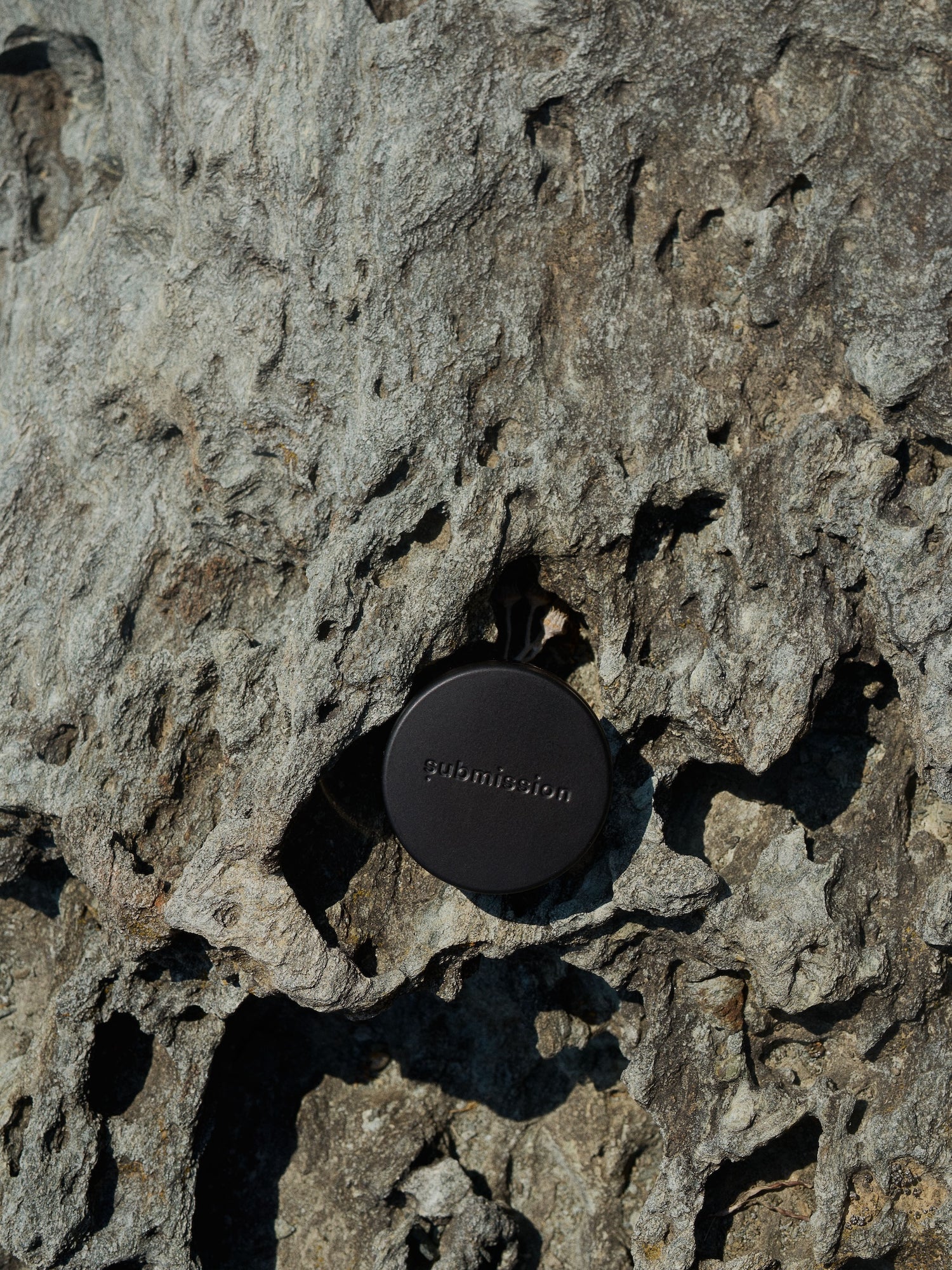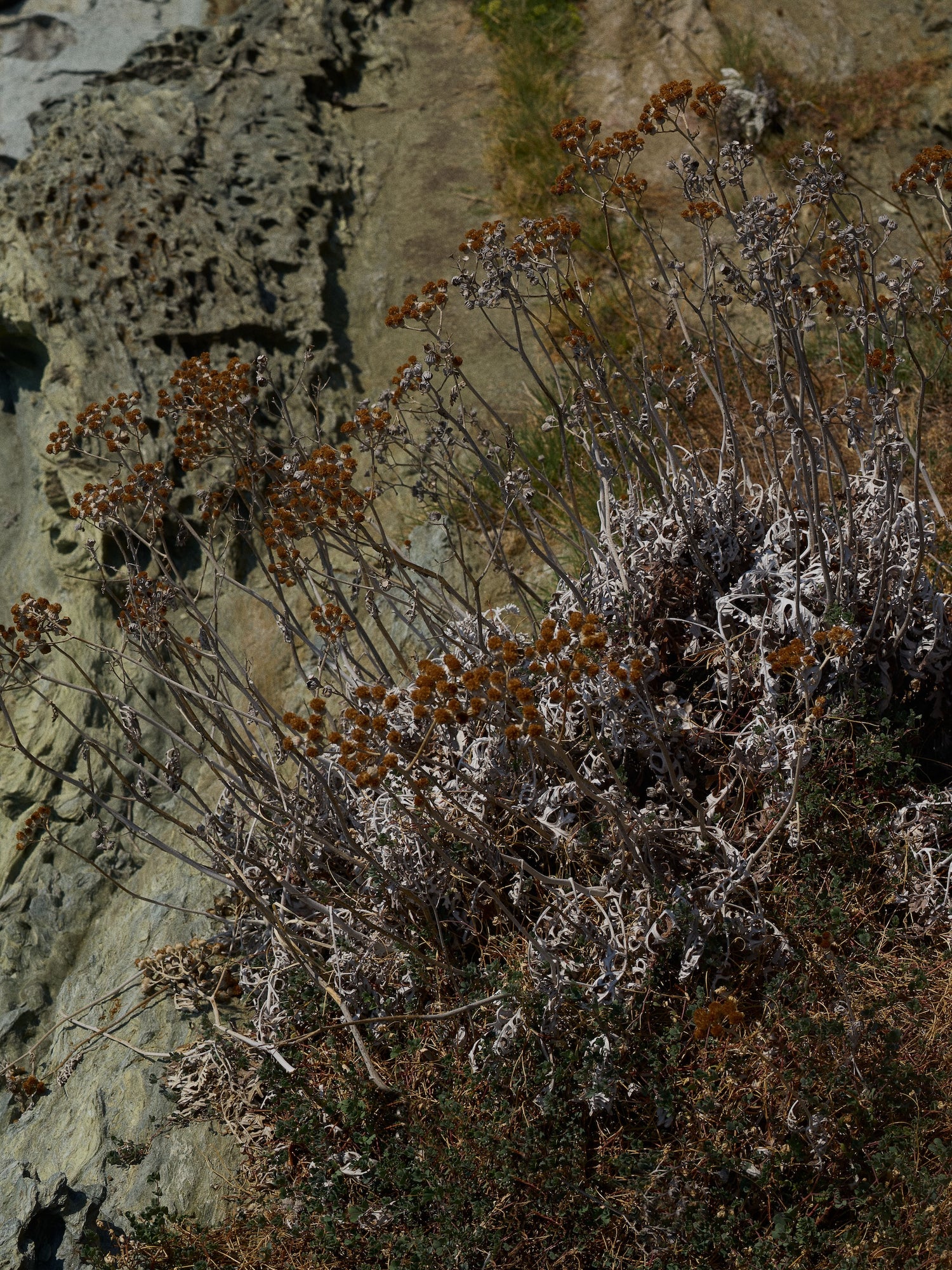
L’Isula di l’Isula
The question of environment, when you are on an island, is kind of everywhere.It hums under the wind, hides in the salt, waits at the edges of the road where the scrub takes over again. On Cap Corse - the island of the island - the wild is not a concept. It’s the air itself, thick with shrubs and sea spray, the kind that sticks to your skin and makes you part of the landscape whether you mean to be or not.
PHOTOGRAPHY CHLOÉ ROMEYER @chloeromeyer
TEXT JESPER GUDBERGSEN @yessirjesper
Driving the narrow road that winds along the cliffs feels like tracing the pulse of the earth. Villages appear like mirages - handfuls of stone houses clinging to the hillside, the occasional café where old men drink pastis and watch the sea as if guarding it. Between them, miles of untouched coast: green spilling into blue, the mountain dissolving into the Mediterranean.
Here, beauty feels both eternal and endangered. Corsica’s seven natural reserves stretch across more than 80,000 hectares, yet even that doesn’t feel like enough. There’s a quiet tension under the surface, a question echoing with every wave: how long can the wild stay wild?
In Cap Corse, time doesn’t move forward, it loops. Roman ruins hide between fig trees. The sea, once a route for sailors and spices, now carries microplastics and stories of loss. Yet it still shimmers with impossible clarity, a reminder of what’s left to protect. The past feels close here, breathing just behind your shoulder. You feel it when you walk down to a nameless cove, following the rhythm of cicadas and the hiss of waves on stone.
The descent is always steep - nature never makes it easy. You slip through dry brush, crushed rosemary scenting your hands, the sun burning down in a clean, relentless way. At the bottom, the world opens: water clear as glass, rock dark and veined, silence heavy except for the sea. You swim, and it feels like the erasure of noise, of time, of everything that doesn’t belong to the moment.
But even in that peace, the awareness remains. The question of the environment isn't a distant policy, it’s right here, under your skin. You start to see the fragility of everything: the way one plastic bottle in the surf looks like an accusation, the way seagrass shifts as if remembering what the sea used to be.
Corsica is an island that remembers. Its people live with contradiction: fiercely independent, yet protective of what binds them to this place. For centuries, sailors found refuge along this coastline; now, activists and conservationists do the same, sheltering species instead of ships. They fight erosion, overfishing, and pollution quietly, without recognition. Their cause isn’t spectacle, it’s survival.
The Cap, they say, is the wildest part of Corsica. L’Isula di l’isula, the island of the island. A mountain under the sea. The phrase feels like a poem, but it’s also literal. Everything here rises and falls: earth into water, human into element, hope into vigilance. The balance is delicate, like holding your breath underwater and trusting you’ll surface again.

Standing at the cliff’s edge, wind cutting against your face, you feel it - the weight of being small, part of something vast. To preserve, you realize, isn’t to keep still. Nature moves, evolves, reclaims. Preservation is listening - letting the land teach you how to belong without taking.
Isolation clarifies. The farther you are from the noise, the more you hear. The sea has its own frequency, ancient and precise. The land speaks through cracks in the rock, through roots that cling when the soil gives way. Beauty is not gentle. It demands participation.
Cap Corse is a lesson in coexistence: raw, restless, and real. To love a place like this is to know its wildness is not guaranteed. Every wave breaking on the shore carries a warning as much as a song.
As the sun drops behind the cliffs, setting the scrubland ablaze with light, the question of the environment no longer feels abstract. It’s as close as the salt on your lips, the wind in your hair, the heartbeat of the island itself.






